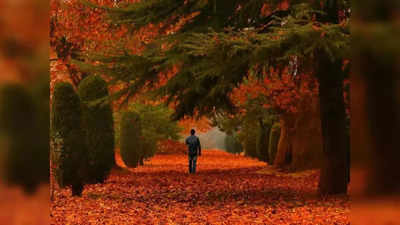Autumn offers a rare chance for wildlife photographers to get amazing shots due to its rich tapestry of colours and atmospheric circumstances. The season gives plenty of picture opportunities as the leaves turn vivid shades of orange, red, and gold, and the morning frost lends a lovely touch to the environment. The wildlife is more active this time of year, and the sun's lower angles make for ideal lighting for striking photographs.
But in order to really enjoy the transient beauty of autumn, you must use the appropriate tools and approaches. Here’s how to achieve striking wildlife images during autumn. Essential gears for autumn wildlife photography Binoculars Carry binoculars to spot wildlife easily, as they are lighter and clearer than a camera.

Waterproof clothing and gloves Waterproof clothing is essential for early morning shoots to stay dry, and gloves will keep your hands warm while operating the camera. Telephoto lens A telephoto lens of at least 300mm is recommended, with options to use converters for increased magnification. Tips to click stunning autumn wildlife photos Get technical with your equipment For maximum depth of field, use a tripod, cable release, and a wide-angle zoom lens (28–135mm) set at f/32.
The tripod will stabilise your camera, allowing you to refine your composition without worrying about camera shake. Adjust your white balance to “cloudy” to enrich the colours of autumn leaves, as automatic settings may dull the natural hues. Positioning and composition Arrange the path to the left to highlight the beech trees and balance the composition with bracken in the corner.
For capturing small animals like bank voles, bait them with sunflower seeds and use a 300mm lens with a 1.4 converter. Set your camera to silent mode to avoid startling the wildlife.
Creative techniques Use a zoom-burst technique by setting your camera to its lowest ISO and highest f-number. Zoom in or out while taking the shot to create dynamic images. For capturing autumn leaves, employ a similar low-speed technique by moving the camera up or down during the shot for a unique effect.
For blurred, motion-filled shots of swollen streams, use a shutter speed of 2 seconds or more and a neutral density filter to manage light exposure. Optimal lighting and timing Autumn’s shorter days and lower sun angles offer extended shooting times and better detail in shadows and highlights. Sunrise and sunset provide the best lighting for wildlife, with fewer people around to disturb your subjects.
Cloudy days are also beneficial, allowing for longer shoots and detailed images. Morning conditions Early autumn mornings often bring frost and mist, creating magical photographic conditions. The mist adds atmospheric effects, while frost can encrust the landscape with beautiful textures.
These conditions can be fleeting, so it’s crucial to get out early to capture them before they disappear. Enhancing your shots Position yourself with the trees behind your subject for striking background colours. When photographing wildlife on water, consider the background and frame your subject with foliage to add depth.
Use aperture priority mode with the fastest frame rate and single spot autofocus for precise control. For challenging lighting, manual exposure settings might be necessary. Also read:| Best photography tips and tricks for beginners.



















